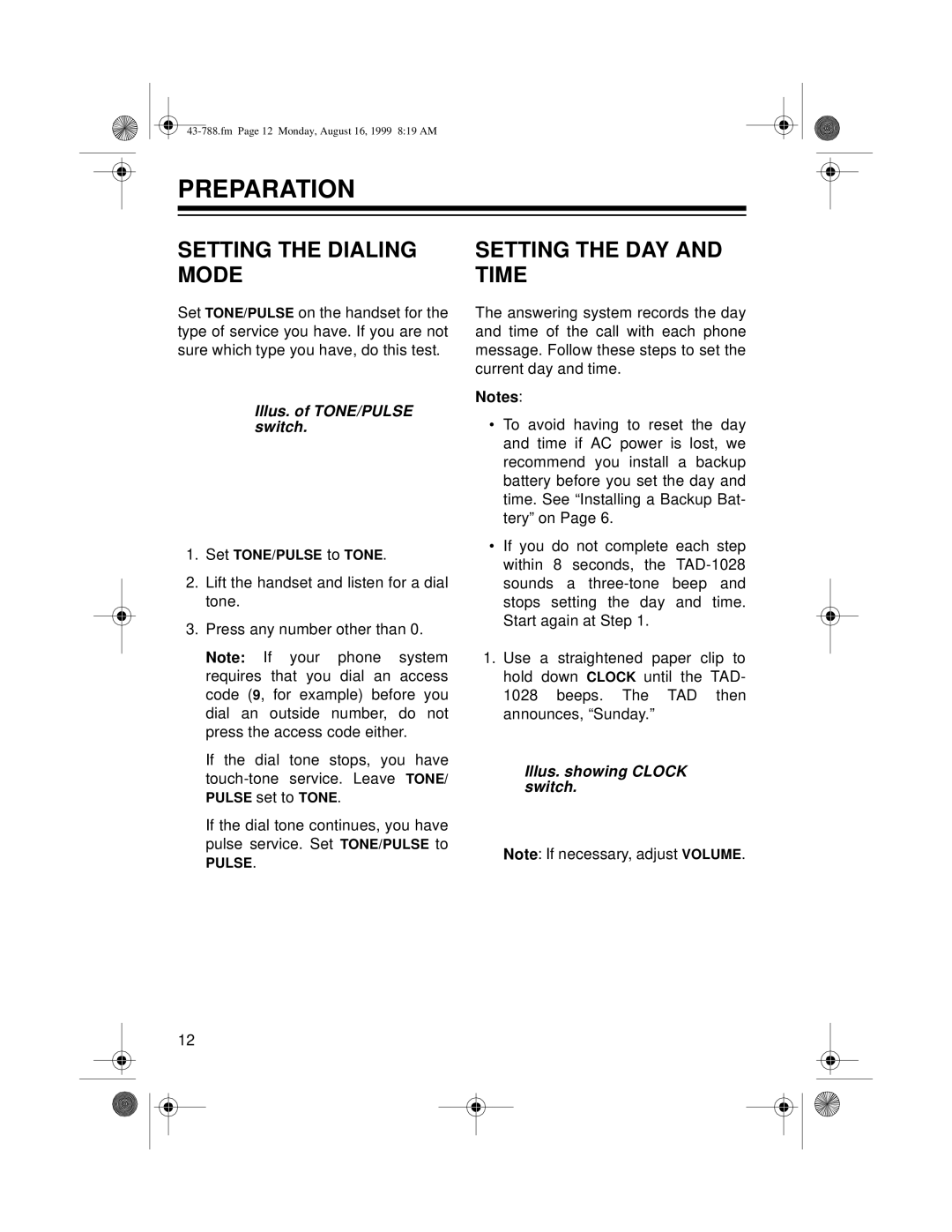TAD-1028 specifications
The Radio Shack TAD-1028 is a compact and efficient telephone answering device that gained popularity in the late 1980s and early 1990s. This device was designed to cater to the growing need for reliable, user-friendly answering solutions for home and office use. The TAD-1028 not only provided users with a way to manage calls effectively, but it also introduced several technological advancements that set it apart from its competitors.One of the standout features of the TAD-1028 is its digital recording capability. Unlike traditional cassette-based answering machines, the TAD-1028 utilized a digital chip to record messages. This innovation provided clearer audio quality, longer message storage times, and the reliability of digital technology, reducing the risk of tape degradation over time.
The TAD-1028 had the ability to record up to 30 minutes of messages, making it ideal for users who frequently received calls while away from home. Its user-friendly interface included an easy-to-read LCD display, which allowed callers to navigate through the recorded messages easily. The device was equipped with simple control buttons, making it straightforward to play, stop, rewind, and delete messages.
Another notable characteristic of the TAD-1028 was its capability to accommodate a range of phone systems. It could connect to both single-line and multi-line phones, allowing versatility in setups. This adaptability made the TAD-1028 a suitable choice for both residential users and small businesses.
The answering machine also featured adjustable recording quality settings. Users could select between a standard setting for normal calls and a high-quality option for important messages, showcasing the device's versatility. Additionally, the TAD-1028 offered a skip and repeat function, allowing users to navigate messages efficiently.
The device was equipped with a “talking” function that announced the number of messages left, making it easier for users to keep track of their calls. Furthermore, it used a rechargeable battery backup feature, ensuring that critical messages would not be lost during power outages.
In summary, the Radio Shack TAD-1028 is a pioneering telephone answering machine, offering digital technology, extended recording capabilities, and user-friendly features. It stands as a testament to the evolution of communication devices during its time, combining practicality with technological innovation. For users seeking a reliable and efficient way to manage their messages, the TAD-1028 represented an excellent solution.

